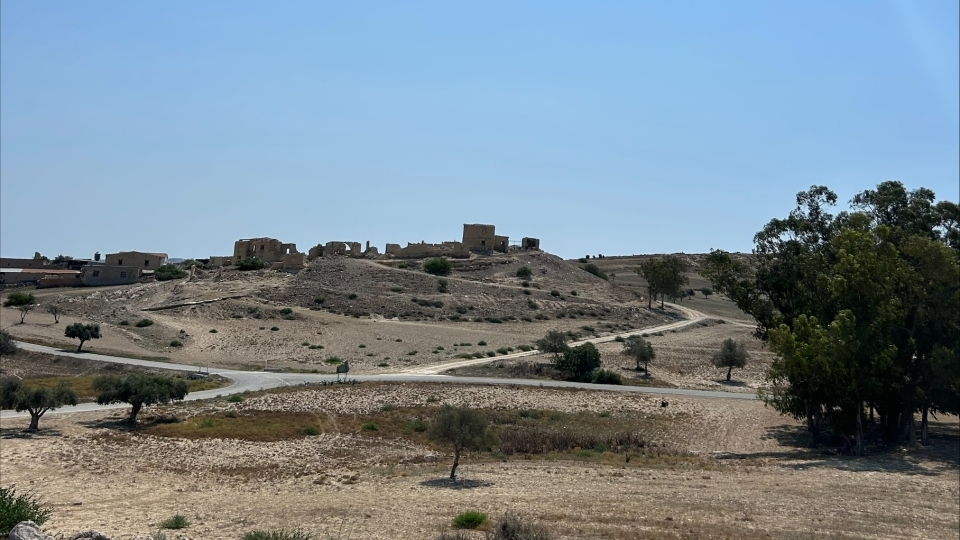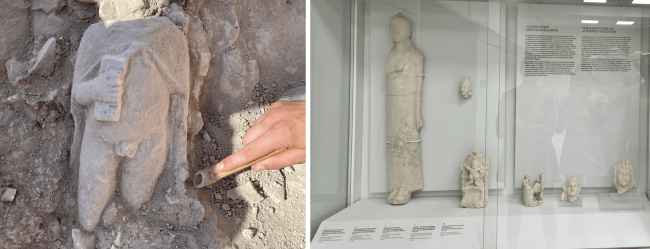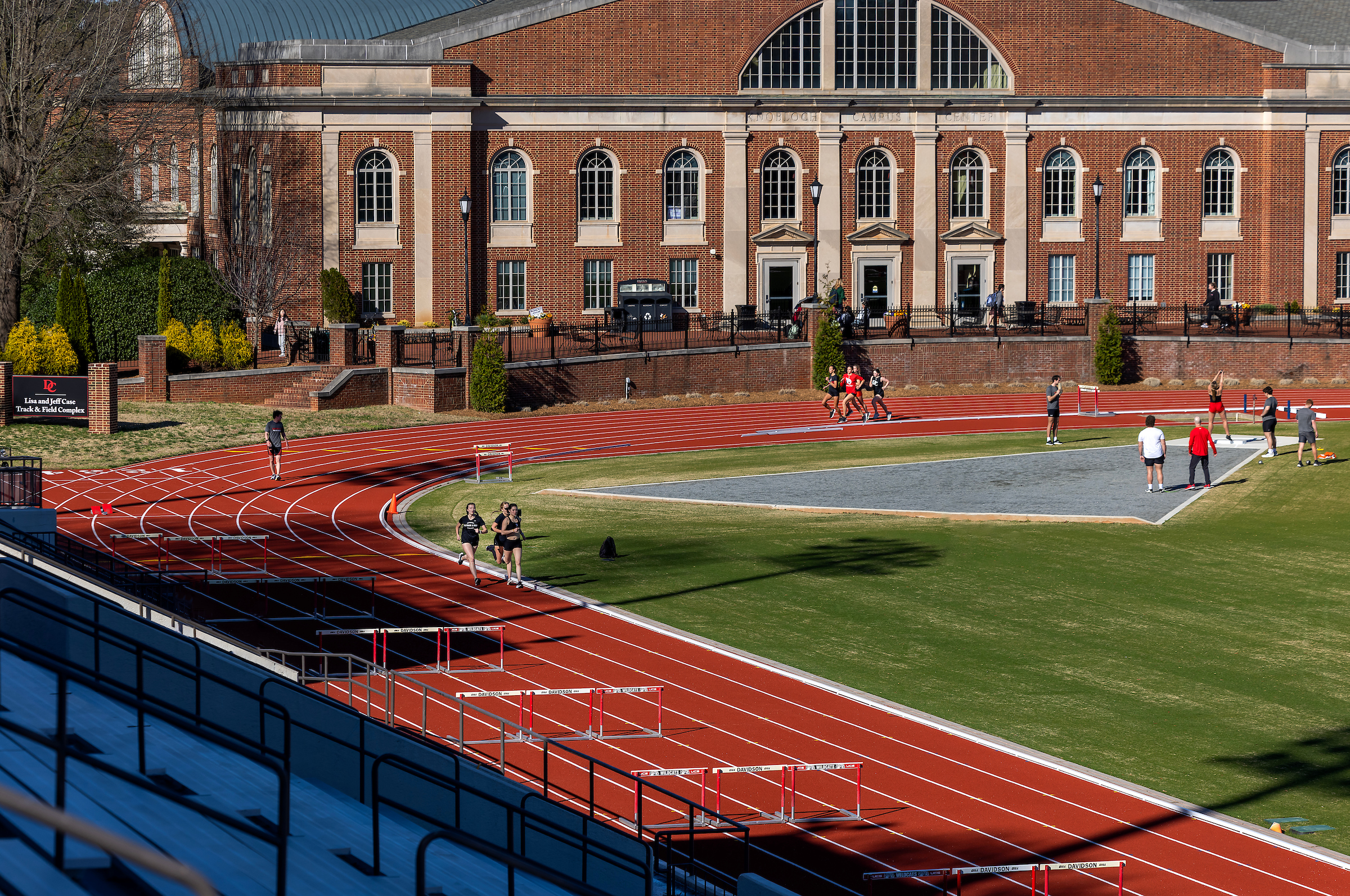My Davidson | A Student Blog Unveiling Ancient Mysteries: A Multidisciplinary Odyssey in Cyprus
March 8, 2024

Three environmental studies students at Davidson College share adventures of their summer archaeological research with Prof. Brad Johnson in Cyprus.
About the Authors
Isabella Acosta-Jimenez ’24 (she/her) is an environmental studies (natural science) major with an anthropology minor from Bernardsville, New Jersey. Grace Kingsbury ’24 (she/her) is an environmental studies (natural science) major from Clinton Corners, New York. Luke Daley ’24 (he/him) is an environmental studies (natural science) and political science double major from Mechanicsville, Virginia.
It is 7:02 a.m. in Cyprus. A cool breeze hits our faces as we race out of our house, “The Palace,” to a beeping van. Van-Go’s 30 year-old frame stands askew, parked halfway between the road and curb, seemingly mirroring our eagerness to dive into the day. We hop in gripping our frappes and praying the UV Index doesn’t hit 11 for a few more hours. This van is not simply a transportation vessel for our time abroad, but proudly stands as a testament to the longstanding relationship between the village of Athienou, Cyprus, and Davidson College. Sun-bleached by decades of off-road use and equally weathered by desert dust, the AAP logo remains a focal point on the white van door.
The Athienou Archaeological Project (AAP) was started in 1990 by now-retired Davidson Classics professor and native Cypriot, Dr. Mike Tomazou. Since then, the project has functioned as a field school and welcomed archeologists with wide skill sets – including historians, scientists and artists. Each group integrates themselves into life in the small village, which welcomes the “archeologi” (αρχαιολογία) in the summers with open arms, many kilos of halloumi cheese and wedding invitations.
After a hiatus following the COVID pandemic, AAP reopened its trenches within the sanctuary, welcoming us (three Davidson Environmental Studies Studies) and two students from other schools. The Athienou-Malloura site was inhabited for 3,000 years, starting in the first millennium BCE. In the three decades of study at the sanctuary and in the surrounding area, our team has exposed domestic, funerary, religious and agricultural contexts. An abundance of material remains unexcavated that illuminates what life was like during the region's occupancy. During this season’s excavations, we unearthed a relief sculpture of the god “Pan,” an assortment of sculpted limbs, Roman lanterns, a glass bead and innumerable fragments of pottery called sherds. Our discoveries were all sent to the Larnaca District Archaeological Museum.

On a typical day, we worked in two shifts: one during dawn and another at dusk to avoid the heat of the day. Summers in Malloura Valley are extremely dry and hot, with temperatures often exceeding 100°F. We learned by doing, so in our hours of excavation we became experts in the slow, intentional digging of archaeologists. What we didn’t know about prior to the dig was the work that archaeologists do outside the trenches. Mike Tomazou’s deep relationship with the village scored us free pastries at the local bakery, but he also served as a bridge between our two communities. Since the project’s establishment, the community members' oral stories and previous experiences have helped map discoveries throughout the valley. Science in conjunction with communication brought us closer to understanding the history of the sanctuary and valley.
As soil scientists under the mentorship of Prof. Brad Johnson, a geologist in Davidson’s Environmental Science Department, the pace of our work was slowed greatly by the archeological methods necessary to preserve the rich historical record of the Malloura Valley. Rather than shoveling soil pits with haste, readying them for classification and analysis, our archeological tools – hand trowel, mattock, brush and dustpan – slowed our mojo. Working within the walls of the archeological plot, all soil removed from its original context has to be sifted for cultural material, much of which includes pottery sherds and statue fragments amongst other objects. As we cleared our precise half-meter by half-meter soil pits, our buckets filled faster than we could sift. Along with digging five soil pits, we explored the Malloura Valley to create a map classifying the soils composing the landscape.
With hard work and lots of laughs along the way we collected all of the samples necessary for our research, while concurrently mapping the entirety of the Malloura Valley by geologic landform type. However, research was not the sole takeaway from our time abroad. We immersed ourselves in the Cypriot culture and explored all of the wonders that Cyprus had to offer. From the sunny beaches of Larnaca to the enchanting painted churches of the Troodos, Cyprus truly is a captivating landscape of culture, history and adventure. Despite its compact size – fitting into North Carolina just over 15 times – every corner of this nation beckons travelers and researchers alike, calling out with its island breezes and welcoming locals.


